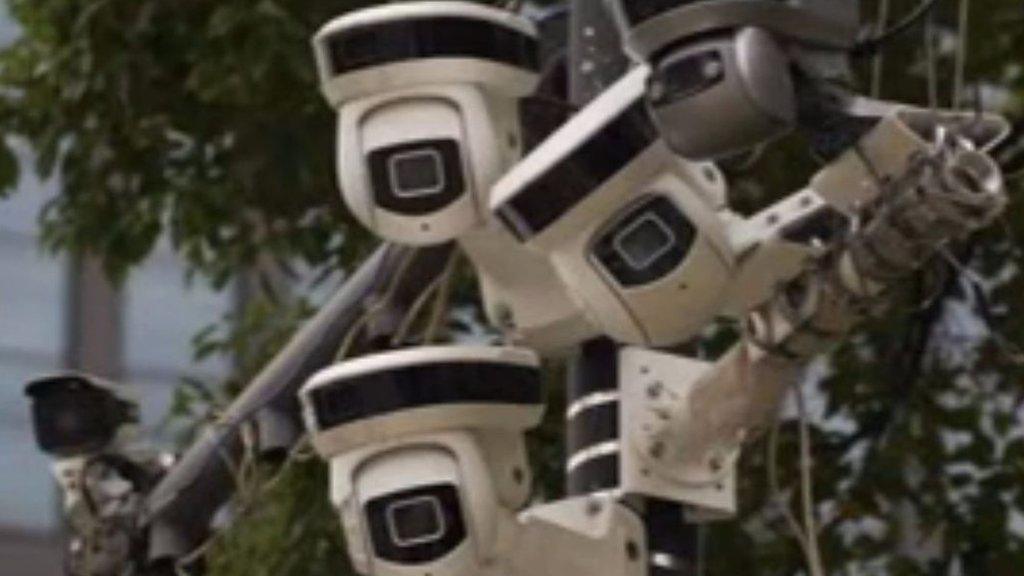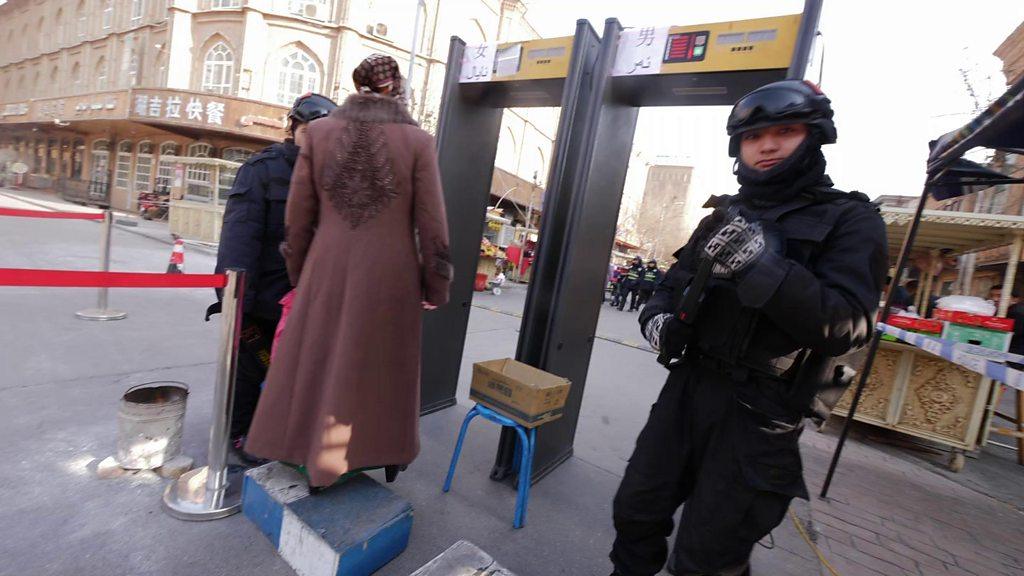Chinese man caught by facial recognition at pop concert
- Published

(File Photo) There are an estimated 170 million CCTV cameras already in place in China
Chinese police have used facial recognition technology to locate and arrest a man who was among a crowd of 60,000 concert goers.
The suspect, who has been identified only as Mr Ao, was attending a concert by pop star Jacky Cheung in Nanchang city last weekend when he was caught.
Police said the 31-year-old, who was wanted for "economic crimes", was "shocked" when he was caught.
China has a huge surveillance network of over 170 million CCTV cameras.
Chinese police unveil camera sunglasses
China sets up huge 'social credit' system
Mr Ao was identified by cameras at the concert's ticket entrance, and apprehended by police after he had sat down with other concert goers.
"The suspect looked completely caught by surprise when we took him away," police officer Li Jin told state news agency Xinhua, external.
"He didn't think the police would be able to catch him from a crowd of 60,000 so quickly," Mr Li, from Honggutan police station in Nanchang city, added.
Mr Li also told China Daily that there were several cameras at the ticket entrances equipped with facial recognition technology. , external
'I wouldn't have gone'
Mr Ao had reportedly driven 90km (56 miles) from Zhangshu to Nanchang with his wife specially to catch the concert.
News site Kan Kan released footage that appeared to show the suspect speaking in police custody, external, saying: "If I knew, I wouldn't have gone [to the concert]."

Jacky Cheung is one of Hong Kong's most famous singers
This is not the first time Chinese police have used facial recognition systems to catch suspects.
In August last year, police in Shandong province arrested 25 suspects using a facial recognition system that was set up at the Qingdao International Beer Festival.
China is a world leader in facial recognition technology and regularly reminds its citizens that such equipment will make it almost impossible to evade the authorities.
The country has been building what it calls "the world's biggest camera surveillance network".
In your face: China's all-seeing surveillance system
An estimated 170 million CCTV cameras are already in place and some 400 million new ones are expected be installed in the next three years.
Many of the cameras use artificial intelligence, including facial recognition technology.
- Published7 February 2018

- Published26 October 2015

- Published10 December 2017

- Published1 February 2018
